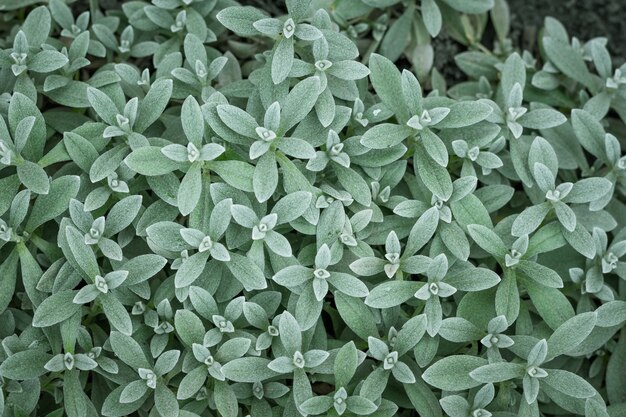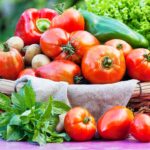Sage (Salvia officinalis), known for its aromatic properties and medicinal benefits, is a hardy, drought-resistant herb that can thrive in South Africa’s varied climates. Sage is highly valued for culinary, medicinal, and essential oil applications, making it an excellent addition to crop portfolios. This guide details each growth stage from seed to harvest, as well as critical inputs, machinery, and disease prevention methods.
1. Planning and Land Preparation
Soil Requirements
Sage grows best in well-drained, sandy or loamy soil with a pH between 6.0 and 7.0. Sage is sensitive to overly wet conditions, so areas with poor drainage or heavy clay soils may not be suitable. Sandy or loamy soils with good drainage encourage optimal root development and reduce the risk of root rot.
Fertilization
Before planting, conduct a soil test to determine existing nutrient levels. Sage benefits from a balanced fertilizer with a slightly higher nitrogen level, but excessive nitrogen can reduce essential oil production. Add organic matter, such as compost, to improve soil structure and moisture retention.
Land Preparation
- Machinery: Use a tractor-mounted plow or rototiller to prepare the land. Ensure the soil is tilled to a depth of about 30 cm to encourage root establishment.
- Weed Control: To minimize weeds, consider a pre-emergent herbicide or plastic mulch. Clean the field of any plant residues and existing weeds to prevent competition for nutrients.
2. Seed Sowing and Germination
Sage can be grown from seed, but the germination rate is often low. Alternatively, some farmers opt for transplants for quicker establishment.
Seed Sowing
- Timing: In South Africa, sow seeds in early spring when the threat of frost has passed (September to October).
- Method: Directly sow seeds about 5 mm deep with a spacing of 50–60 cm between plants and 70 cm between rows.
- Watering: Keep the soil consistently moist but not waterlogged to encourage germination. Use a fine mist or drip irrigation to avoid washing seeds away.
- Inputs: Basic hand tools or seed drill machinery can help with even sowing. Small-scale farmers may prefer to sow by hand for smaller plots.
Germination
Seeds germinate in about 2-3 weeks. To increase success, maintain soil temperatures between 20–25°C.
3. Vegetative Growth Stage
Once seedlings are established, sage plants begin their vegetative growth phase. This stage involves root and leaf development.
Watering
Sage is drought-tolerant and requires moderate water. Aim for deep, infrequent watering:
- Frequency: Once established, water sage only when the top 2–3 cm of soil is dry, approximately once every two weeks, depending on rainfall.
- Method: Drip irrigation is ideal, as it reduces the risk of fungal diseases by keeping the foliage dry.
Fertilization
Apply a light nitrogen-based fertilizer every 4–6 weeks during the growing season to encourage leafy growth, but avoid excessive nitrogen that can reduce oil quality.
Weed and Pest Control
- Weed Control: Regular hoeing or mulching helps prevent weeds from competing with sage.
- Pests: Monitor for aphids, spider mites, and whiteflies. If infestations become severe, apply insecticidal soap or neem oil. Use pesticides sparingly, as excessive use can reduce oil quality and harm beneficial insects.
4. Flowering and Essential Oil Development
Sage plants typically reach full maturity and begin flowering in their second year. This is also when they produce the highest essential oil content, ideal for harvesting leaves for oils or culinary purposes.
Pruning
Pruning back flower stems after they bloom can encourage bushier growth and prevent the plant from becoming too woody.
Fertilizer Needs
During this phase, reduce nitrogen input, as lower nitrogen levels encourage higher essential oil production in the leaves.
5. Harvesting Sage
Sage is ready for harvest when plants are about 20-25 cm tall. The best time to harvest is early morning when the essential oils are at their peak.
- Hand Harvesting: For smaller plots, use pruning shears to cut stems just above a leaf node, leaving enough foliage to promote regrowth.
- Mechanical Harvesting: For larger fields, consider using a herb harvester or mechanical sickle. These machines cut the plants at the right height, preserving essential oils and minimizing damage to the plant.
Timing
In South Africa, a single harvest per year is common, though regions with milder winters may allow for a second harvest in late autumn. Regular harvesting in the second year (around 2–3 times) helps maintain plant health.
6. Post-Harvest Drying and Storage
Once harvested, sage leaves need proper drying and storage to preserve essential oils and quality.
Drying
Dry leaves in a well-ventilated, shaded area with temperatures between 30-40°C. Avoid direct sunlight, as this degrades essential oils. Use drying racks, or, for larger-scale operations, consider using a dehydrator.
Storage
After drying, store leaves in airtight containers, in a cool, dry place away from sunlight. This preserves the quality for up to 1 year.
7. Common Diseases and Management
Sage is relatively resilient but can still be affected by diseases, particularly in humid climates.
- Powdery Mildew: A common fungal issue in humid conditions. Reduce watering on foliage, improve air circulation, and remove affected leaves. Apply fungicides only if necessary.
- Root Rot: Caused by poor drainage. Ensure well-drained soil and avoid overwatering.
- Rust: Rust spots can appear on leaves during humid weather. Remove affected leaves and, if necessary, apply organic fungicides like copper-based products.
8. Pesticides, Herbicides, and Organic Alternatives
Use pesticides sparingly and only when infestations are severe, to protect beneficial insects and maintain oil quality. Organic pesticides, like neem oil, are often preferred. Pre-emergent herbicides or plastic mulch can help control weeds but avoid herbicides directly on young sage plants, as this can damage the crop.
Summary of Key Inputs and Machinery
- Machinery: Tractor-mounted plow/rototiller, herb harvester, drying racks or dehydrator.
- Inputs: Nitrogen-based fertilizer (balanced with other nutrients), compost or organic matter, insecticidal soap/neem oil (for pests), copper-based fungicides (for disease control), and drip irrigation systems.
By following these steps and closely monitoring for disease and pests, South African farmers can successfully cultivate sage and maximize their yields. Sage’s drought tolerance, minimal nutrient needs, and resistance to pests make it a relatively low-maintenance crop with high market value, ideal for South Africa’s diverse agricultural landscape.
Join 'Farmers Mag' WhatsApp Channel
Get the latest Farming news and tips delivered straight to your WhatsApp
CLICK HERE TO JOIN






